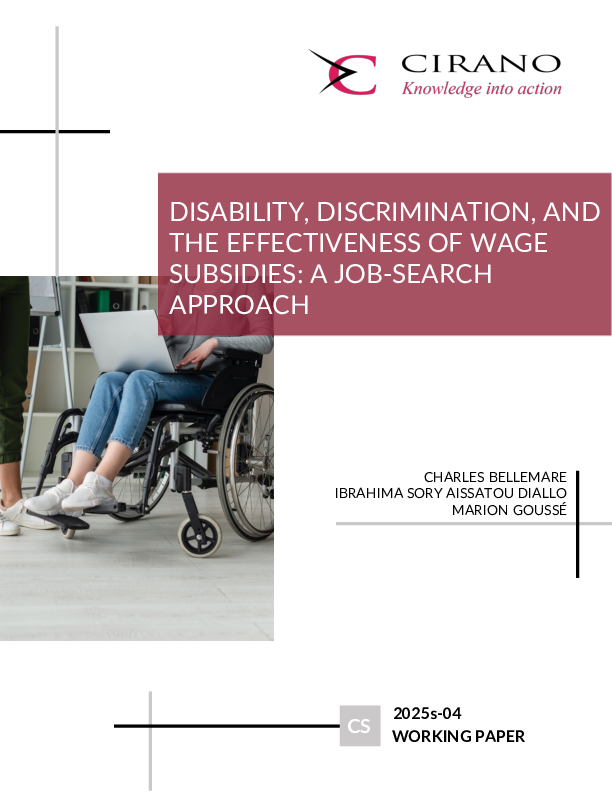Disability, discrimination, and the effectiveness of wage subsidies: A job-search approach
In this paper we develop and estimate a job search model with matching and bargaining in the presence of employer taste-based discrimination. The model is estimated using a longitudinal panel data from Canada’s Survey of Labour and Income Dynamics (SLID). Estimates suggest that employer discrimination and individual labour costs explain the majority of labour market disparities between persons living with and without disabilities. We use our model to estimate several counterfactuals. We find that implementing a hiring wage subsidy policy could increase the employment rate of persons with disabilities by 7 percentage points. Eliminating discrimination, on the other hand, would have an even greater impact, raising the employment rate by 14 percentage points for men, and 19 percentage points for women. Combining both measures — removing discrimination and introducing a hiring wage subsidy — would lead to an employment rate increase of 20 percentage points for men, and 24 percentage points for women. This combined approach would significantly reduce the existing employment rate gap between persons with and without disabilities. In particular, the employment rate gap is predicted to fall to 33 percentage points for men (relative to 53 percentage points in the data) and to 13 percentage points for women (relative to 39 percentage points in the data).




